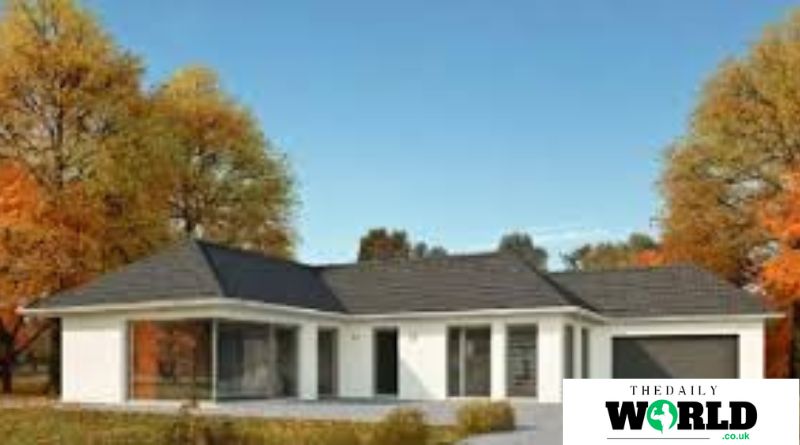When planning a new home or renovating an existing one, understanding the average height of a house is essential to ensuring functionality, aesthetics, and compliance with building regulations. The height of a house influences not only its visual appeal but also factors such as ventilation, natural light, heating, and even resale value. As we move into 2024, modern designs and changing living needs impact standard home dimensions, creating a broader range of choices for homeowners. This guide provides insight into the typical measurements and factors that determine the average height of a house in various contexts, helping you make informed decisions for your next project.
Understanding Standard Residential House Heights
The height of a typical residential home varies depending on several factors, including the number of floors, the architectural style, and local building codes. Generally, houses are classified into three categories: single-story, two-story, and multi-story homes, each with its own set of average height specifications.
Single-Story Homes
Single-story homes are usually the shortest in height. They generally range between 10 to 12 feet per floor from floor to ceiling. This height allows for ample space for lighting fixtures, air conditioning systems, and insulation within the ceiling cavity while maintaining a comfortable interior space. Homes with higher ceilings, reaching up to 14 feet, are increasingly popular, especially in modern and luxury single-story homes. The flexibility in ceiling heights offers design freedom but also affects construction costs, energy efficiency, and the overall aesthetic of the home.
Two-Story Homes
In two-story homes, the height generally doubles due to the additional floor. A two-story house typically measures between 20 to 25 feet, with each floor averaging around 10-12 feet. However, this range can vary depending on whether a higher-than-average ceiling is desired on either floor. Modern two-story houses sometimes feature vaulted ceilings in specific areas, such as the foyer or living room, which can raise the overall height even more. Homes with open-concept designs or cathedral ceilings may also require higher than average heights to accommodate structural features and windows that allow natural light to reach both floors.
Multi-Story or Tall Residential Buildings
For multi-story buildings beyond two floors, the total height tends to increase by 10-12 feet per additional story. For instance, a three-story home might stand between 30 to 35 feet tall, and a four-story home could reach up to 45 feet. While residential skyscrapers can extend far taller than traditional homes, these heights are more relevant in urban areas where space is constrained and vertical living is more common. Local ordinances and zoning restrictions often limit the maximum allowable height for residential buildings, especially in suburban and rural areas, to maintain uniformity in neighborhood aesthetics and manage the effects on infrastructure and local landscapes.
Factors That Influence the Average Height of a House
Several key factors contribute to determining the height of a house, from practical considerations like ceiling height and attic space to aesthetic decisions and local regulations. Here are some of the most influential aspects:
Ceiling Height Preferences
Ceiling height is a critical factor in overall home height. The standard ceiling height for most new homes is around 9 feet, but many homeowners are now opting for 10 or even 12-foot ceilings to create a sense of openness. Higher ceilings can make spaces feel larger and more luxurious; however, they can also increase heating and cooling costs due to the larger volume of air in the room. In older homes, ceilings of 8 feet were once common, reflecting building norms of the time. These homes often feel cozier but may feel cramped compared to modern standards.
Roof Design and Pitch
Roof style and pitch have a significant impact on the height of a house. A steeper pitch, common in Victorian and colonial styles, raises the overall height of the home. Homes with flat or low-slope roofs, such as those in modern or ranch-style designs, are generally shorter in height. In multi-story homes, the choice between a gabled, hip, or flat roof style will change the total height measurement by several feet, especially in homes with attics or loft spaces. When considering roof height, it’s essential to take into account the need for attic space, storage, or room for HVAC systems, which may require additional space above the ceiling.
Foundation Type
The type of foundation used can also affect a home’s height. Houses with a raised foundation, such as those with a crawl space or a basement, will have a greater total height than homes built directly on a slab foundation. For example, a raised foundation may add an additional 1 to 3 feet to the height, depending on the foundation style and local building codes. Homes built in flood-prone areas may require elevated foundations, which increase the total height of the house by several feet, impacting both the design and construction budget.
Local Building Codes and Zoning Regulations
Local building codes and zoning laws regulate the maximum height allowed for homes to maintain a cohesive community look and ensure safety. For instance, in some urban areas, the height of residential buildings may be capped at 35 feet, while in suburban or rural areas, the limit may be more flexible. These regulations may also vary depending on the neighborhood and historical significance of the area. Homeowners planning new construction or modifications should check with local planning authorities to confirm the permitted height for residential buildings in their area.
Aesthetic and Architectural Trends
Architectural styles influence height, as different design styles require varying ceiling heights and roof pitches. Modern homes with minimalist designs may favor lower heights, whereas Victorian or Tudor homes often feature steeply pitched roofs and vaulted ceilings, which add to the home’s height. Current trends in home design, such as open-concept layouts and large windows, also affect house height, as higher ceilings allow for expansive windows that let in more natural light.
The Impact of House Height on Living Experience and Costs
The height of a house affects not only its visual appeal but also practical aspects such as energy consumption, maintenance, and even property value. Understanding these implications is essential for homeowners looking to balance aesthetics with functionality.
Energy Efficiency
Homes with higher ceilings may require more energy to heat and cool due to the larger volume of air within each room. Additionally, multi-story homes may experience different temperatures on each floor due to rising warm air, requiring careful HVAC planning. However, houses with higher ceilings often allow for better ventilation, which can improve indoor air quality. For environmentally conscious homeowners, investing in energy-efficient insulation and HVAC systems can help mitigate the higher energy costs associated with taller homes.
Construction and Maintenance Costs
Building a taller home often involves higher construction costs, especially for structural reinforcements required in multi-story homes. The choice of ceiling height, roof style, and building materials all contribute to the final cost. Taller homes also typically come with increased maintenance needs, such as higher exterior walls that require painting or siding repair. Gutters, windows, and roofing on taller structures can be more challenging to clean and maintain, which can add to the long-term costs of homeownership.
Resale Value and Market Appeal
The height of a house can influence its marketability, especially in areas where certain architectural styles are in demand. Homes with higher ceilings or additional stories may have a higher resale value due to their spacious feel and versatility. However, this can vary depending on regional preferences, as some buyers may prefer the ease of single-story homes for accessibility reasons. Additionally, well-designed taller homes with ample natural light and an open layout can command premium prices in competitive real estate markets.
Conclusion
The height of a house is a defining feature that influences both its exterior aesthetics and interior functionality. While the average height for single-story homes ranges between 10 and 12 feet, multi-story homes can reach up to 35 feet or more. Factors such as ceiling height preferences, roof design, foundation type, and local regulations all play a role in determining the overall height of a home. By understanding these considerations, homeowners can make informed choices that align with their lifestyle, budget, and design aspirations. Whether you’re building a new home or renovating an existing one, prioritizing the right height can enhance both the comfort and value of your property, making it a crucial aspect of any residential project.
Read also: check













